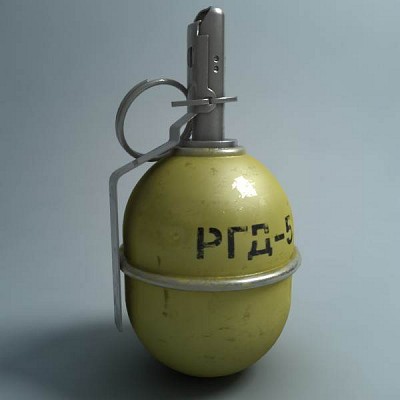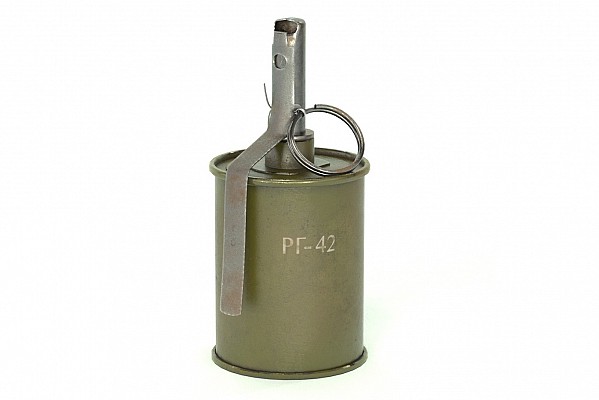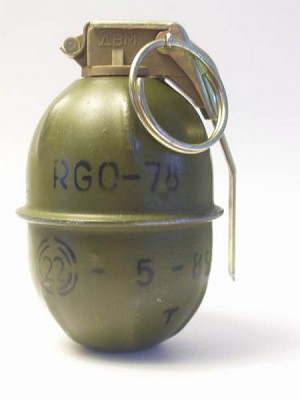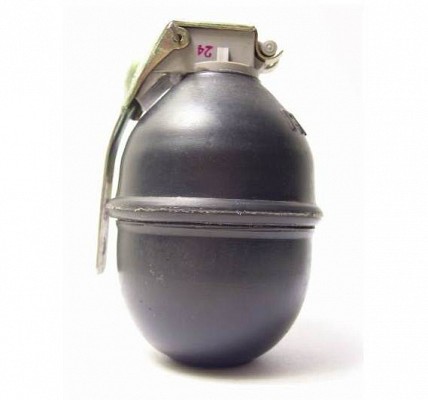RGD-5
Overview

RGD-5
3D render of a RGD-5 grenade showing the tall UZRGM fuze.
Source: AndreyK @ www.exchange3d.com -
© copyright lies with original owner
Russia
Bulgaria
China
East Germany
Georgia
Poland
RGD-5 / Ruchnaya Granata Distantsionnaya 5
Russian for "distant hand grenade"
RGD-5 / Ruchnaya Granata Degtyareva 5
Russian for "Degtyarev hand grenade"
Type 59 (Chinese production)
Description
Introduction
The RGD-5 is a offensive hand grenade of Soviet origin. It was developed in the early 1950's to replace all World War 2 vintage offensive hand grenades in service. The name RGD-5 stands for "Ruchnaya Granata Degtyareva", which is Russian for "Degtyarev hand grenade". The RGD-5 has been produced under license by various nations.
Design
The RGD-5 has an ovoid body which consists of two parts that have been joined in the middle. An UZRGM time delayed fuze with spoon is fitted. Later developments include the RGO-78 with steel balls that result in more lethal fragments and the RGN-86 with an aluminum body that is better suited as an offensive grenade.
Firepower
The RGD-5 is an offensive grenade with such a fragmentation radius that makes it also suitable for defensive purposes. The RGD-5 is filled with TNT and the steel body will turn into splinters. The lethal radius in 3 meters and fragments may reach out to 25 meters.
Users
The RGD-5 is one of the most common grenades in the world and was acquired in large quantities by Soviet forces, Warsaw Pact nations and nations receiving Soviet aid. Nowadays many RGD-5 grenades remain in active use.
Variants of the RGD-5
Details
Related articles

RG-42
The RGD-5 was developed to replace various offensive hand grenades in Soviet service, most notable is the RG-42 which was in widespread use.

RGO-78
The RGO-78 is a defensive variant of the RGD-5. This is achieved by using less explosive and more fragments. Furthermore, it comes with a new type of fuse.

RGN-86
The RGN-86 is an improved variant of the RGD-5. The new fuse makes it more compact and the aluminum body reduces safety hazards for the operator.